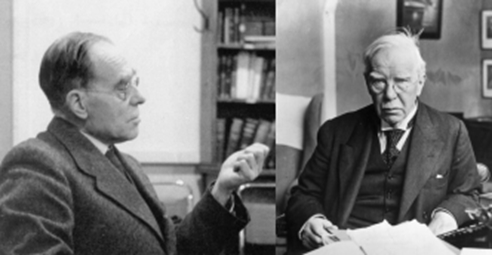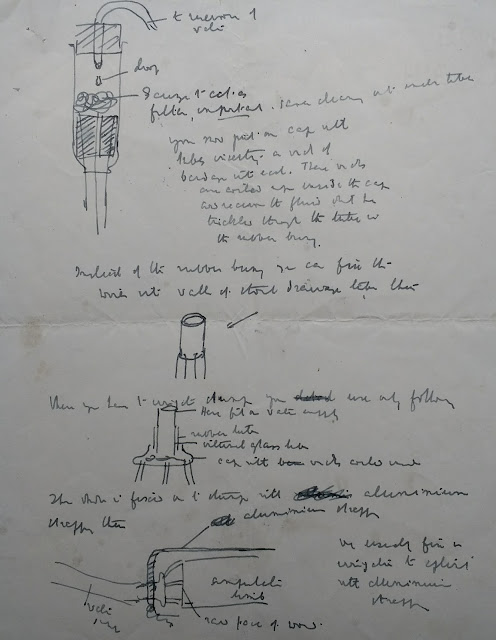The letters of Sir Almroth Wright and Leonard Colebrook
This post has been written by Jane Reidy who undertook some work experience with the Heritage Centre and catalogued the series of letters between Sir Almroth Wright and Leonard Colebrook, held in RCPI’s archive.
Almroth Wright studied medicine at Trinity College Dublin, taking his medical degree in 1883. He was appointed Professor of Pathology at Netley in 1892, moving in 1902 to St. Mary's Hospital where he founded the research laboratory. In both institutions he researched extensively in bacteriology and immunology. During the First World War Wright established a research unit to study the bacteriology of wound infection, attached to the British Army Hospital in Boulogne. Wright returned to St. Mary's after the War and continued to work until 1946, when he retired aged 85. While at St. Mary's Wright taught many of the leading immunologist and bacteriologist of the twentieth century including Sir Alexander Fleming and Leonard Colebrook. Colebrook, born in 1883, became a friend and research partner of Wright’s working with him in St Mary’s Hospital.
 |
| Leonard Colebrook and Sir Almroth Wright |
The majority of the letters date from the First World War, when Wright was working for the British Army, based in Boulogne. During this time Wright carried out research into inoculation and wound treatment, he also proposed mass vaccination programmes to prevent the spread of easily preventable diseases. Wright’s relationships with the other medical officers during the War years seemed to be quite tense: not that surprising given their surroundings and purpose. A number of Wright’s colleagues seemed to have resigned their positions in Boulogne, attributed by Wright to their incompatibility with their colleagues. In several letters, Wright described complex theories and experiments alongside records of ordinary life. In one letter Wright discussed and drew diagrams of the Rose Irrigator, a tool to continuously supply fluid at a steady temperature to a wound, while also discussing the renting of his cottage, which Colebrook was looking after. Wright was dismayed to hear that the tenant had answered the door to Leonard Colebrook in her nightgown!
 |
| Letter from Almroth Wright with designs for a Rose Irrigator (CW/2/3) |
The correspondence between these two men was for the most part, very affectionate and often full of praise. Even when the two men disagreed and argued in their letters about experiments and different scientific theories, they still show great admiration for each other’s work. Wright and Colebrook seem to have become almost like family during their long professional association, evident in Wright’s decision to leave a legacy to Colebrook.
This familial feeling was extended to Colebrook’s wife, Dorothy, who Wright refers to in affectionate tones in his letters. Although affectionate in the individual case, Wright’s view and attitude on women in society as a whole was less kind. Wright published a book, and a number of articles, expounding his anti-suffrage views. He was extremely against women being given the vote, believing that there was no ‘ethical justification’ for women’s suffrage. During the First World War Wright continued to publishing anti-suffrage articles, which are mentioned in some of the letters to Colebrook. In a letter sent when Colebrook moved to work in the Burns Unit in the Glasgow Royal Infirmary in 1942, Wright expressed his gladness that Colebrook had many new opportunities for work and that he also had the use of a ‘smoking room into which not even women in breeches can come’.
 |
| Letter from Sir Almroth Wright dated March 1942 (CW/2/20) |
Jane Reidy